Anatomy of the dog’s nose
The dog has two nostrils (nares) divided by a cartilaginous and bony septum. The tip of the dog’s nose – rhinarium – is typically moist and cool to touch. When a dog flares its nostrils to sniff, the shape of the nostril openings change thus allowing redirection of air into the upper part of the snout and more direct airflow to the olfactory area. The slit at the side of the nares is used in the expiration of breath during sniffing as explained later.
The Muzzle of the dog is Important
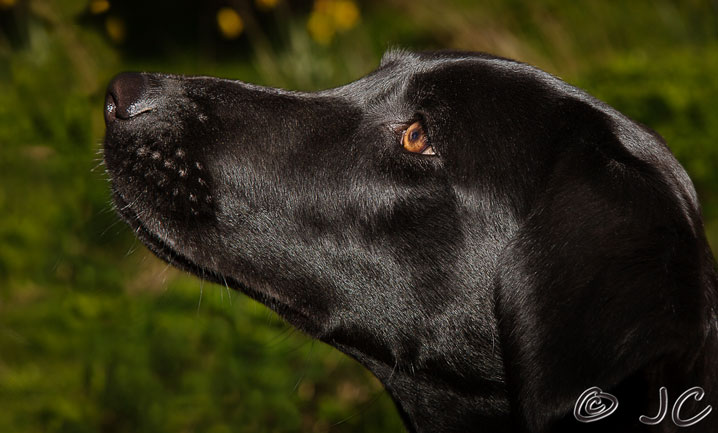
THE HUMAN HAS UP TO 5 MILLION OLFACTORY RECEPTORS, WHEREAS THE DOG HAS UP TO 300 MILLION.
[1 and 3]
This is possible because the long nose contains a labyrinth of thin bones, called turbinates, which are all lined by an epithelium. This provides a very large surface area for the air breathed to pass over. In the anterior part of the nose the bones are known as maxillo-turbinates, and they are lined by a respiratory type epithelium producing mucus.
It is in the posterior part of the nose containing ethmoid turbinates that the lining epithelium is olfactory in type and this contains the 300 million olfactory receptors, or neurones, needed to recognise the odour molecules. The neurones need maximum contact with the air containing the odour molecules and therefore have hair-like projections – or cilia. In mammals it is thought that each olfactory receptor cell only expresses one single odorant receptor gene. [4]
Once the odour is recognised, a pathway of tiny nerves relay signals to the brain area dedicated to olfaction – the olfactory lobe – which then interprets the odours in combination with other specialised areas of the brain. As part of the olfactory anatomy there is a basal plate of bone known as the Lamina Transversa (not seen in humans) which creates an olfactory shelf or recess separated from the respiratory section. This allows odours to accumulate and be held for recognition even while air is exhaled.
Cross section views
The complexity of the labyrinth of thin turbinate bones in the nose is best seen in cross section. Below are two views of the anterior opening of the nostril in a dog’s skull showing the maxillo-turbinates, which would be covered by respiratory type epithelium.
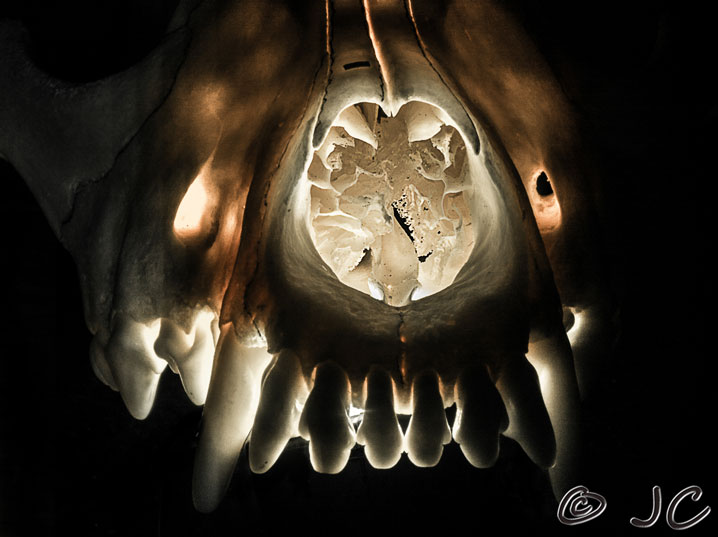
‘view of turbinate bones within the nostril’
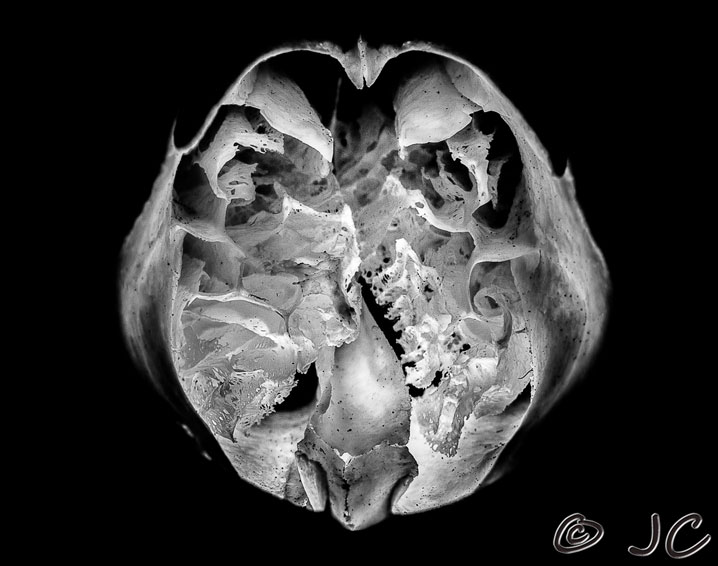
‘higher magnification of labyrinth of thin turbinate bones’
Nature can mimic and help explain the structure of the nose
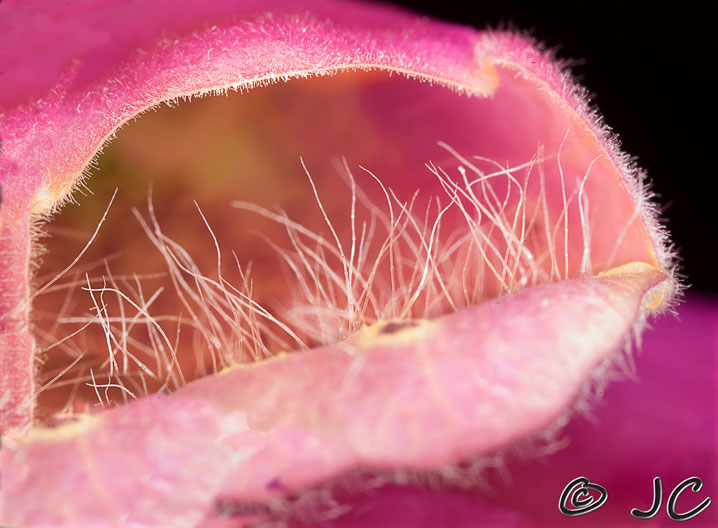
Olfactory shelf lined by ‘cilia’ in a Foxglove

‘Cilia’ with attached ‘mucous droplets containing odour molecules’. The photo is of a bed of moss
Did you know for social contact the dog has a different site for a second separate sense of smell area?
It consists of two elongated fluid-filled sacs above the roof of the mouth. It is named the VOMERONASAL ORGAN or JACOBSON’S ORGAN – and it detects body scents (pheromones – hormone-like substances) allowing sexual and social assessment of other dogs.
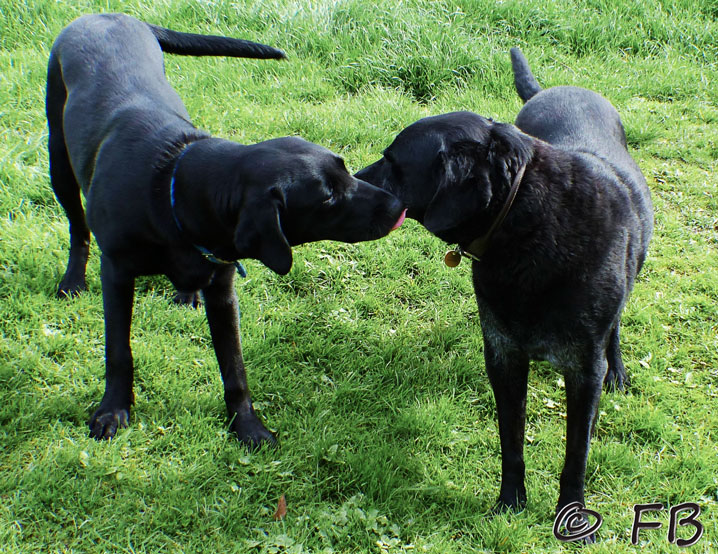
[1] Tyson P. Dogs’ Dazzling Sense of Smell. Nova Science Now. posted 10.04 www.pbs.org/wgbh/nova/nature/dogs-sense-of-smell.htm[3] Coren Stanley Phd, Hodgson Sarah from “Understanding your Dog for Dummies. www.dummies.com/how-to/content/ understanding-a-dogs-sense-of-smell
4] “Press Release: The 2004 Nobel Prize in Physiology or Medicine to Richard Axel and Linda B. Buck”. Nobelprize.org. Nobel Media AB 2014. Web. 25 Jul 2014. <http://www.nobelprize.org/nobel_prizes/medicine/laureates/2004/press.html>
Anatomy of the dog’s nose
The dog has two nostrils (nares) divided by a cartilaginous and bony septum. The tip of the dog’s nose – rhinarium – is typically moist and cool to touch. When a dog flares its nostrils to sniff, the shape of the nostril openings change thus allowing redirection of air into the upper part of the snout and more direct airflow to the olfactory area. The slit at the side of the nares is used in the expiration of breath during sniffing as explained later.
The Muzzle of the dog is Important

THE HUMAN HAS UP TO 5 MILLION OLFACTORY RECEPTORS, WHEREAS THE DOG HAS UP TO 300 MILLION.
[1 and 3]
This is possible because the long nose contains a labyrinth of thin bones, called turbinates, which are all lined by an epithelium. This provides a very large surface area for the air breathed to pass over. In the anterior part of the nose the bones are known as maxillo-turbinates, and they are lined by a respiratory type epithelium producing mucus.
It is in the posterior part of the nose containing ethmoid turbinates that the lining epithelium is olfactory in type and this contains the 300 million olfactory receptors, or neurones, needed to recognise the odour molecules. The neurones need maximum contact with the air containing the odour molecules and therefore have hair-like projections – or cilia. In mammals it is thought that each olfactory receptor cell only expresses one single odorant receptor gene. [4]
Once the odour is recognised, a pathway of tiny nerves relay signals to the brain area dedicated to olfaction – the olfactory lobe – which then interprets the odours in combination with other specialised areas of the brain. As part of the olfactory anatomy there is a basal plate of bone known as the Lamina Transversa (not seen in humans) which creates an olfactory shelf or recess separated from the respiratory section. This allows odours to accumulate and be held for recognition even while air is exhaled.
Cross section views
The complexity of the labyrinth of thin turbinate bones in the nose is best seen in cross section. Below are two views of the anterior opening of the nostril in a dog’s skull showing the maxillo-turbinates, which would be covered by respiratory type epithelium.

‘view of turbinate bones within the nostril’

‘higher magnification of labyrinth of thin turbinate bones’
Nature can mimic and help explain the structure of the nose

Olfactory shelf lined by ‘cilia’ in a Foxglove

‘Cilia’ with attached ‘mucous droplets containing odour molecules’. The photo is of a bed of moss
Did you know for social contact the dog has a different site for a second separate sense of smell area?
It consists of two elongated fluid-filled sacs above the roof of the mouth. It is named the VOMERONASAL ORGAN or JACOBSON’S ORGAN – and it detects body scents (pheromones – hormone-like substances) allowing sexual and social assessment of other dogs.

[1] Tyson P. Dogs’ Dazzling Sense of Smell. Nova Science Now. posted 10.04 www.pbs.org/wgbh/nova/nature/dogs-sense-of-smell.htm[3] Coren Stanley Phd, Hodgson Sarah from “Understanding your Dog for Dummies. www.dummies.com/how-to/content/ understanding-a-dogs-sense-of-smell
4] “Press Release: The 2004 Nobel Prize in Physiology or Medicine to Richard Axel and Linda B. Buck”. Nobelprize.org. Nobel Media AB 2014. Web. 25 Jul 2014. <http://www.nobelprize.org/nobel_prizes/medicine/laureates/2004/press.html>

